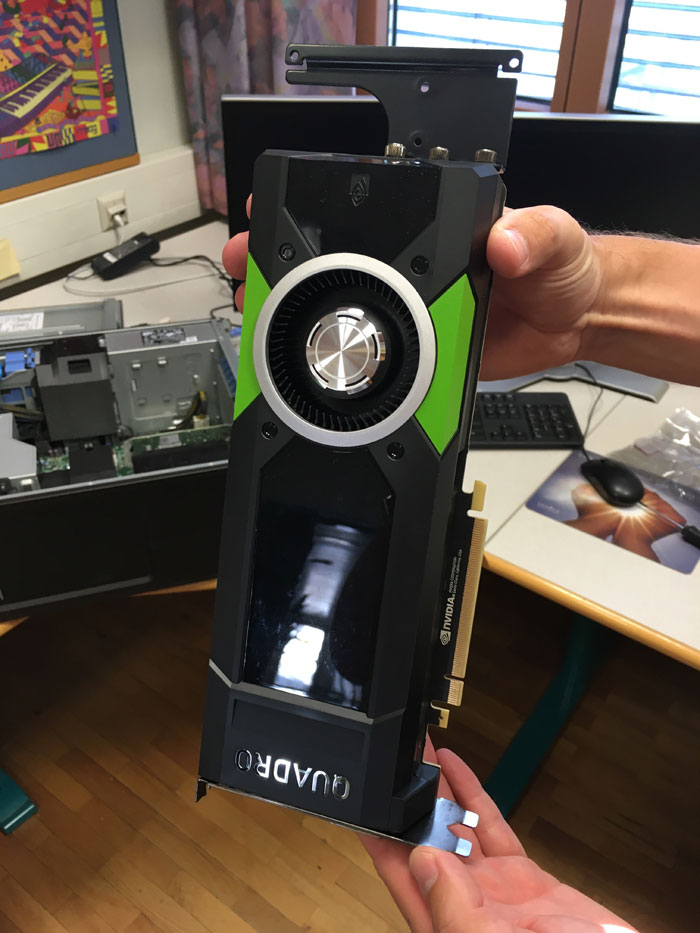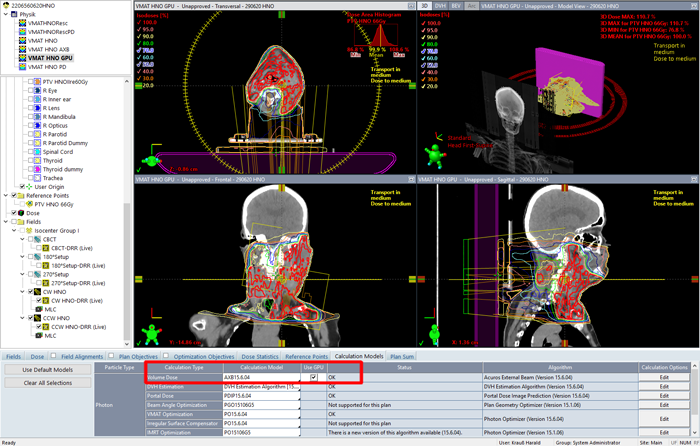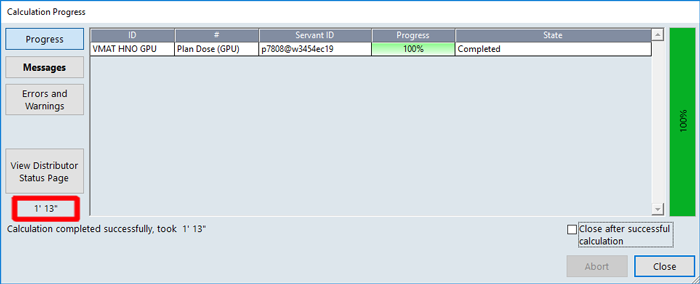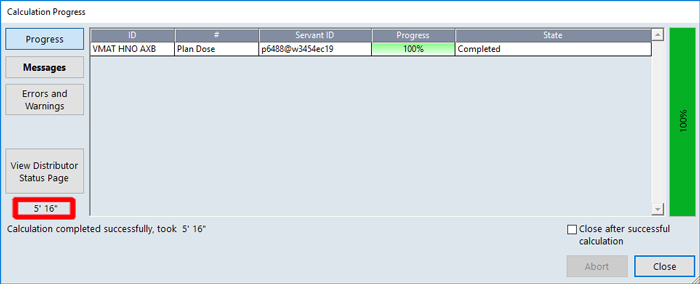Eclipse GPU Calculation - First Look
On eight of our eleven Eclipse calculating workstations1, we installed GPUs to increase calculation speed. The currently supported GPU model is the NVidia Quadro P5000 with 16 GB RAM:
First Calculation
Eclipse 15.6 (our current version) offers GPU support for
- Acuros dose calculation and
- IMRT optimization.
The next release, Eclipse 16.1, will also support VMAT optimization, which will have a much larger impact on the overal throuput.
To verify the estimated performance gain according to Varian Release Notes ("factor of four"), we recalculated an Acuros head and neck VMAT plan.
If the proper licence is installed and the setup is correct, a "Use GPU" checkbox appears next to the Acuros Calculation Model:
One can either check this box on a plan-by-plan basis, or set the Calculation Defaults accordingly.
On an Eclipse workstation, GPU calculation is always local2. After checking the box we hit F5:
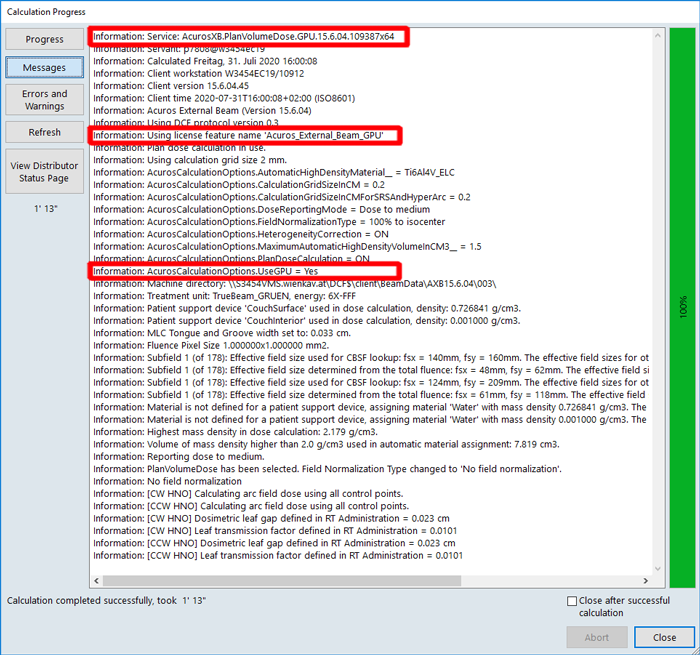
(Messages during Acuros volume dose calculation with GPU.)
For the head and neck plan (200 slices, 2 mm grid), Acuros dose calculation with GPU took 1' 13 " or 73 seconds:
The same plan is calculated on the local CPUs1 in 5' 16" or 316 seconds:
This gives a speed improvement factor of 4.33, which confirms the factor mentioned the Release Notes. Both jobs were calculated locally using Plan Dose, so this is a fair comparison.
It is worth mentioning that the DCF is not involved. If we switch to AAA, we can use our DCF, and the same plan is calculated in 1' 32". So the GPU calculation is even faster than our huge network of 11 DCF agents!
Conclusion and Outlook
Since IMRT optimization on CPU even right now only takes a few seconds, GPU is not expected to make a big difference. Regarding dose calculation, a minority of plans are calculated with Acuros, so the current overal impact of the GPU upgrade under Eclipse 15.6 is rather limited.
On the other side, the time spent during VMAT optimizations at our institute is significant3. Therefore, the big performance gain is expected with Eclipse 16. The ARIA 16 upgrade is planned for December 2020.
Notes
1 Current Eclipse hardware is a Dell Precision T7810XL with 32 GB RAM. These eight "official" Eclipse workstations will also be supported under Eclipse 16. Three more "unofficial" workstations are part of the DCF as well, but their hardware (Dell Precision T5600) will not be supported under Eclipse 16.
2 Remote GPU optimization and dose calculation is possible on a dedicated FAS (Framework Agent Server). This makes all Eclipse hardware obsolete, but the license is rather pricey.
3 About 90% of all plans are modulated, which requires some sort of optimization.
